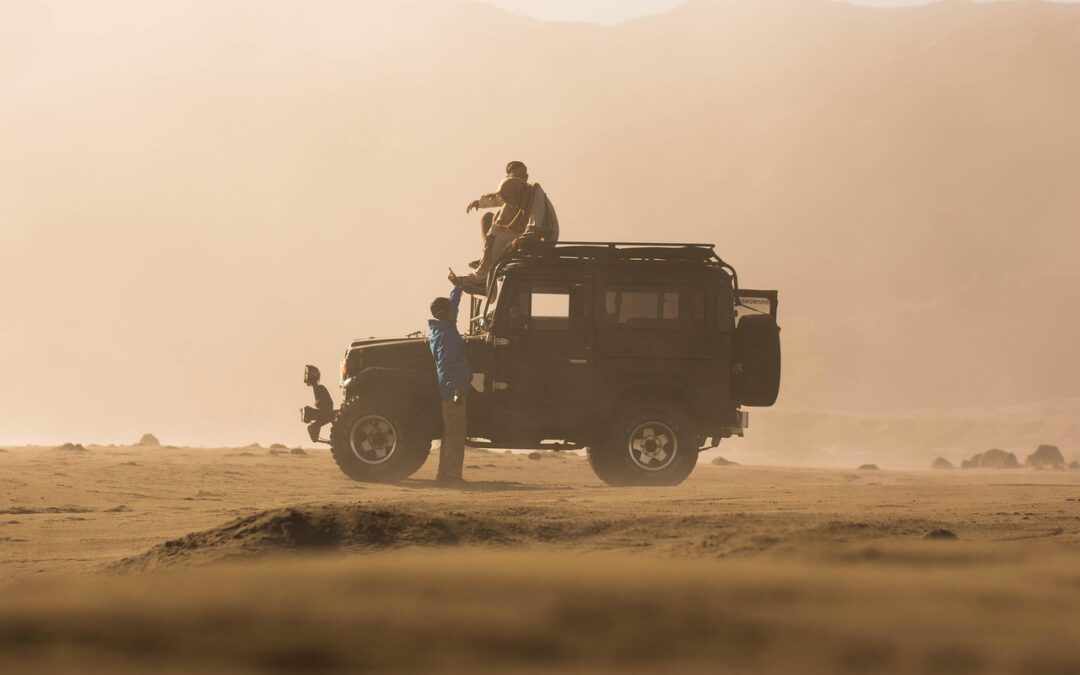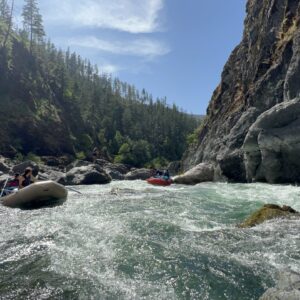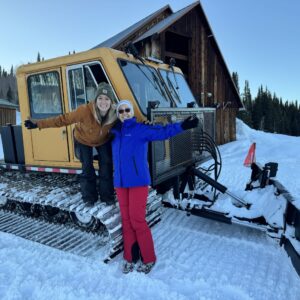Why Coast Guard how to plan a winter hiking expedition in US Military Services?
Found it! Adventure Stories in US Military Services
Let’s crank up the intensity and make this genuinely opinionated:
Let’s be brutally honest: Your gear isn’t just gear; it’s your first, last, and only line of defense against winter’s unforgiving bite. Forget our what to wear winter hiking advice at your peril; it’s not mere suggestion, but a non-negotiable blueprint for survival. Dressing in adaptable layers—a wicking base, insulating mid-layers, and a waterproof outer shell—isn’t about comfort; it’s about battling hypothermia’s icy grip and winning. Stay dry, stay warm, stay alive.
Beyond your skin, your essential winter expedition gear list isn’t a wishlist; it’s a sacred scroll of survival. We’re talking about absolutely crucial items like reliable navigation tools (map, compass, and GPS – redundancy is key, never gamble on one!), emergency food and water (your lifeblood when things go south), a comprehensive first-aid kit (not just a few plasters, but a life-saving arsenal), and vital, non-negotiable safety items like a fire starter, an emergency shelter, and a signaling whistle. Without these, you’re not adventurous; you’re reckless.
This isn’t just about ‘covering everything.’ This is about empowering you to conquer. We’ll delve into what to wear, what to pack, how to find your way when the world turns white, what to do when trouble inevitably strikes, and even how to forge your body into a winter-ready machine. By adopting this holistic, no-compromise approach to cold weather outdoor adventure planning, you’re not just going for a hike; you’re actively forging an incredible, triumphant adventure story for yourself. You’ll be equipped not just with knowledge, but with an unshakeable confidence to not merely witness winter’s brutal beauty, but to dominate it responsibly.
And finally, let’s stop ‘touching on’ getting your body ready and start prioritizing it as a fundamental pillar of success. Physical preparation through cardio, strength training, and crucial practice hikes isn’t just a suggestion; it’s the absolute bedrock for a more enjoyable, safer, and ultimately, a successful and survivable winter outdoor adventure. Your body is your ultimate tool; neglect it at your peril.
Winter’s Wild Call: Crafting Your Epic Cold-Weather Expedition!
Your Winter Quest at a Glance!
Dreaming of a snowy adventure? Winter hiking is awesome, but it needs smart planning! This guide helps you prepare like a pro, thinking like the brave folks who keep us safe. We’ll cover everything from what to wear and pack, how to find your way, what to do if trouble strikes, and even how to get your body ready. Get set for an unforgettable, safe, and thrilling winter journey!
Ready for a Real-Life Adventure Story?
Imagine a world transformed by snow and ice. Sunlight glinting off frosted trees, the crisp air filling your lungs, and a quiet stillness that makes you feel like you’re exploring a secret realm. Winter hiking isn’t just a walk; it’s an adventure story waiting to happen! But just like any great explorer knows, the most epic adventures are built on smart planning and careful preparation. You wouldn’t set sail into a storm without checking your boat, right? The same goes for venturing into the winter wilderness.
Think about heroes who work in tough, cold places, like the U.S. Coast Guard. They operate in icy waters, always ready for anything. They plan, train, and have all the right gear because safety is their number one rule. Even though we’re talking mountains, not oceans, we can learn a lot from their “always be ready” mindset when we plan our own amazing winter hiking expeditions. Let’s dive into how you can plan your own incredible, safe, and thrilling cold weather outdoor adventure!
The Coast Guard Mindset: Why Planning is Your Superpower
When you hear “Coast Guard,” you probably think of brave folks rescuing people, navigating rough seas, and always being prepared for anything. Their secret? Incredible planning and a deep understanding of their environment. You might not be sailing the Bering Sea, but planning your winter wilderness trek with a similar mindset will make your adventure much safer and more enjoyable. It’s about thinking ahead, anticipating challenges, and having solutions ready. This isn’t just a blog post; it’s your guide to becoming a winter adventure strategist!
Understanding Winter’s Unique Challenges
Winter brings extra layers of difficulty that summer hiking doesn’t. We’re talking about colder temperatures, shorter daylight hours, unpredictable weather (like sudden snowstorms!), icy trails, and the risk of hypothermia or frostbite. Plus, less people are out, so help might be further away if you need it. That’s why your planning superpower is so important for any winter expedition gear list and safety strategy.
Gear Up: Your Ultimate Winter Hiking Arsenal
Just like a Coast Guard crew has specialized equipment for cold-water missions, you’ll need the right gear for your winter hike. This isn’t just about being comfy; it’s about staying safe and warm, which are vital for a successful winter outdoor adventure planning trip.
What to Wear: Layers Are Your Best Friend
Forget your single heavy jacket. The key to staying warm is layering! You can add or remove clothes as your body temperature changes. Think of it like building a cozy onion!
- Base Layer: This is your first layer, right against your skin. It should be made of wool or synthetic material (like polyester), which wicks away sweat to keep you dry. Cotton is a big no-no because it holds moisture and makes you cold!
- Mid-Layer: This layer provides insulation and warmth. Think fleece jackets or puffy vests.
- Outer Layer (Shell): This is your protection against wind, snow, and rain. Look for waterproof and windproof jackets and pants.
- Hats, Gloves, and Socks: You lose a lot of heat through your head, so a warm hat is a must. Waterproof gloves or mittens are important to protect your hands. Wool or synthetic socks are crucial to keep your feet warm and dry – bring an extra pair!
- Footwear: Waterproof, insulated hiking boots are essential. Make sure they’re broken in and fit well.
What to Pack: Beyond the Basics
Your backpack should be filled with essentials, keeping in mind that everything needs to work even when it’s freezing. This is your personal emergency kit winter hiking list!
- Navigation Tools: A map, compass, and a fully charged GPS device or phone with offline maps. Know how to use them!
- Headlamp or Flashlight: Winter days are short, and you don’t want to be caught in the dark. Bring extra batteries!
- Sun Protection: Yes, even in winter! Snow reflects sunlight, so sunscreen and sunglasses are important.
- First-Aid Kit: For minor scrapes, blisters, and any unexpected issues.
- Fire Starter: Waterproof matches or a lighter. This can be a lifesaver for warmth or signaling.
- Shelter: An emergency blanket or bivy sack can provide crucial protection if you get stuck.
- Repair Kit & Tools: Duct tape, a multi-tool, knife – small things that can fix big problems.
- Extra Food: High-energy snacks that won’t freeze, like nuts, dried fruit, and chocolate.
- Water: Stay hydrated! Use an insulated bottle to prevent your water from freezing.
- Whistle: For signaling if you need help.
- Traction Devices: Microspikes or snowshoes might be necessary depending on snow and ice conditions.
- Trekking Poles: Great for stability on slippery trails.
Knowing where you’re going and how to stay on track is critical. The Coast Guard relies on expert navigators, and you should too – even if that navigator is you! Learning navigating winter trails is a key survival skill for winter hikes.
Plan Your Route Carefully
- Research: Check trail conditions, weather forecasts (hourly!), and avalanche risk if you’re in mountainous terrain.
- Tell Someone: Always, always, *always* tell a trusted person your exact route, when you expect to be back, and who is with you. Stick to the plan!
- Start Early: Shorter daylight hours mean you need to start your hike well before sunrise to give yourself plenty of time to finish before dark.
- Know Your Limits: Winter hiking is much harder than summer hiking. Choose a shorter, easier trail than you might normally attempt.
Staying on Track
Snow can cover trail markers, making it easy to get lost. Pay attention to your surroundings and use your navigation tools diligently.
- Map & Compass: Learn how to use them together. They don’t run out of battery!
- GPS: A great backup, but don’t rely solely on it. Batteries die in the cold.
- Footprints: If snow is fresh, your own footprints can guide you back, but don’t follow old, unclear tracks.
What If Things Go Wrong? Your Emergency Action Plan
Even with the best planning, unexpected things can happen. This is where your Coast Guard-inspired preparedness really shines. Having a plan for emergencies is a vital survival skill for winter hikes.
Common Hazards & How to Deal with Them
- Hypothermia: This happens when your body loses heat faster than it can produce it. Symptoms include shivering, confusion, and clumsiness.
- Action: Get to shelter, change into dry clothes, get warm (hot liquids, emergency blanket), and seek medical attention.
- Frostbite: This is when body tissue freezes, often affecting fingers, toes, nose, and ears.
- Action: Gently warm the affected area (don’t rub!), get to warmth, and seek medical attention.
- Getting Lost: Don’t panic!
- Action: Use your navigation tools. If you can’t find your way, stay put, build an emergency shelter, and signal for help (whistle, fire, reflective surfaces). The “STOP” acronym is good: Stop, Think, Observe, Plan.
- Injury: A sprained ankle or worse can be serious in the cold.
- Action: Administer first aid, try to stay warm, and signal for help.
Signaling for Help
If you need rescue, knowing how to signal is crucial. Think about how search and rescue teams (like the Coast Guard!) look for people.
- Whistle: Three short blasts repeated regularly is a universal distress signal.
- Bright Colors: Wear bright gear that stands out against the snow.
- Fire: If safe and possible, a controlled fire with a lot of smoke is a great daytime signal.
- Cell Phone: Only use it for emergencies to save battery. Be aware that service can be spotty in the wilderness.
Getting Your Body Ready: Train Like an Explorer!
Winter hiking isn’t just a mental game; it’s a physical one too! Being in good shape will make your adventure more enjoyable and safer. It’s part of the `Coast Guard readiness winter adventure` mindset.
Physical Preparation
- Cardio: Activities like running, biking, or swimming will build your endurance for long hikes.
- Strength Training: Focus on your legs, core, and back. Carrying a pack and walking on uneven, snowy terrain requires strong muscles.
- Practice Hikes: Go on shorter hikes with your packed backpack to get used to the weight and feel. Even better if you can find some chilly days to practice!
Expansive Summary: Your Winter Adventure Blueprint
So, you’re ready to answer `Winter’s Wild Call` and embark on an unforgettable journey into the snowy landscapes! We’ve journeyed through the essential steps to planning a `safe and thrilling cold-weather expedition`, drawing inspiration from the unwavering preparedness of organizations like the Coast Guard. Just as they meticulously plan every mission in challenging environments, your `winter hiking expedition` demands a similar level of thought and readiness.
We started by embracing the “Coast Guard Mindset,” understanding that `planning is your superpower` when facing winter’s unique challenges, from freezing temperatures to shorter daylight hours. Your gear is your first line of defense; remembering our `what to wear winter hiking` advice means dressing in adaptable layers – a wicking base, insulating mid-layers, and a waterproof outer shell – to stay dry and warm. We also explored your essential `winter expedition gear list`, emphasizing crucial items like reliable navigation tools (map, compass, and GPS), emergency food and water, a comprehensive first-aid kit, and vital safety items like a fire starter, emergency shelter, and signaling whistle. These aren’t just suggestions; they are key components of your `emergency kit winter hiking`, designed to help you `stay safe winter wilderness`.
Next, we covered `navigating winter trails`, stressing the importance of thorough route research, checking weather and avalanche forecasts, and always informing someone of your `winter trek plan`. Starting early and knowing your physical limits are crucial to avoid being caught out after dark. We also prepared you for the unexpected, outlining an `emergency action plan` to handle common winter hazards like hypothermia, frostbite, getting lost, or injury. Knowing how to administer first aid and effectively `signal for help winter wilderness` are indispensable `survival skills for winter hikes`.
Finally, we touched on `getting your body ready`, highlighting how physical preparation through cardio, strength training, and practice hikes contributes to a more enjoyable and safer `winter outdoor adventure`. By adopting this holistic approach to `cold weather outdoor adventure planning`, you’re not just going for a hike; you’re crafting an incredible `adventure story` for yourself, equipped with the knowledge and confidence to conquer winter’s beauty responsibly. So, pack your bags, tell a friend, and step out into your carefully planned, epic winter wilderness! Remember, every prepared step is a step towards a memorable and safe `Coast Guard readiness winter adventure`.
More on Coast Guard how to plan a winter hiking expedition…
- Coast Guard winter hiking safety
- Winter hiking expedition planning
- Cold weather survival guide
- Coast Guard search and rescue winter
- Extreme winter hiking gear
- How to plan a winter expedition
- Winter backcountry safety tips
- Coast Guard cold weather operations
- Emergency preparedness winter hiking
- Avalanche safety for hikers
- Hypothermia prevention and treatment
- Frostbite awareness winter
- Winter camping essentials
- Navigation in snow and ice
- Winter wilderness survival skills
- Coast Guard maritime safety winter
- Remote winter hiking planning
- Winter trail conditions advice
- Multi-day winter hike logistics
- Winter mountain climbing safety
- Cold weather first aid kit list
- Winter expedition food ideas
- Water purification winter
- Shelter building winter conditions
- Layering for winter hiking
- Foot care for cold weather expeditions
- Winter hiking training plan
- GPS for winter navigation
- Winter weather forecasting for hikers
- Snowshoeing expedition guide
- Winter hiking essentials checklist
- Arctic hiking planning guide
- Winter expedition logistics planning
- Coast Guard winter preparedness tips
- Winter hiking for beginners guide
- Advanced winter hiking techniques
- Cold weather emergency signals
- Winter hiking rescue procedures
- Coastal winter hiking safety
- Ice safety guidelines Coast Guard
- Winter survival handbook
- Off-grid winter expedition planning
- Winter bivouac setup
- Planning a multi-day winter hike
- Winter survival training resources
- Winter hiking gear recommendations
- What to pack for winter hiking
- Best winter hiking routes
- Coast Guard safety briefing winter
- Winter backcountry permits
- True adventure stories
- Wilderness survival tales
- Real-life expedition stories
- Cold weather survival narratives
- Arctic exploration adventures
- Mountaineering survival stories
- Coast Guard rescue stories
- Inspirational adventure memoirs
- True stories of human endurance
- Winter expedition narratives
- Tales of survival against odds
- Real-life heroes adventure
- Polar expedition stories
- Maritime adventure tales
- Cold weather rescue incidents
- Stories of triumph in nature
- Survival in remote locations
- Epic survival stories
- Winter hiking adventure books
- True stories of overcoming challenges
- Bushcraft survival narratives
- Alaskan wilderness survival stories
- Heroic rescue stories Coast Guard
- Outdoor adventure documentaries
- True accounts of survival
- Coast Guard heroism tales
- Winter survival film
- Real stories of arctic survival
- Survival against all odds books
- Explorer adventure narratives
- True stories of resilience
- Cold weather adventure tales
- Winter wilderness stories
- True stories of maritime rescue
- Coast Guard search and rescue true stories
- Adventure travel blog
- Inspiring survival stories
- Real-life outdoor adventures
- Winter hiking challenges true stories
- Survival on ice true stories
- Coast Guard winter operations true stories
- True stories of human spirit
- Epic winter survival documentaries
- Adventure stories for explorers
- Narratives of wilderness survival
- Cold weather hero tales
- Real-life Coast Guard rescues
- Arctic survival true events
- Winter expedition journals
- Best adventure books true
- Winter survival guide Coast Guard
- Extreme cold weather survival tips
- Winter hiking clothing system
- Coast Guard winter mission planning
- Backcountry winter safety courses
- Winter expedition packing list
- How to stay safe winter hiking
- Cold weather emergency procedures
- Survival kits for winter expeditions
- Real wilderness adventure stories
- Extreme weather survival stories
- True stories of resilience in nature
- Winter survival facts
- Coast Guard cold weather emergency
- Winter hiking challenges and solutions
- Expedition planning checklist winter
- Winter hiking emergency plan
- Advanced winter navigation
- Cold weather risk management
- True stories of arctic heroism
Contents
- 1 Winter’s Wild Call: Crafting Your Epic Cold-Weather Expedition!
- 1.1 Ready for a Real-Life Adventure Story?
- 1.2 The Coast Guard Mindset: Why Planning is Your Superpower
- 1.3 Gear Up: Your Ultimate Winter Hiking Arsenal
- 1.4 Trail Wisdom: Navigating the Snowy Landscape
- 1.5 What If Things Go Wrong? Your Emergency Action Plan
- 1.6 Getting Your Body Ready: Train Like an Explorer!
- 1.7 Expansive Summary: Your Winter Adventure Blueprint
- 1.8 More on Coast Guard how to plan a winter hiking expedition…





Subscribe To Our Newsletter
Join our mailing list to receive the latest news and updates from our team.
Be among the first to learn about our latest adventures and upcoming excursions!
You have Successfully Subscribed!